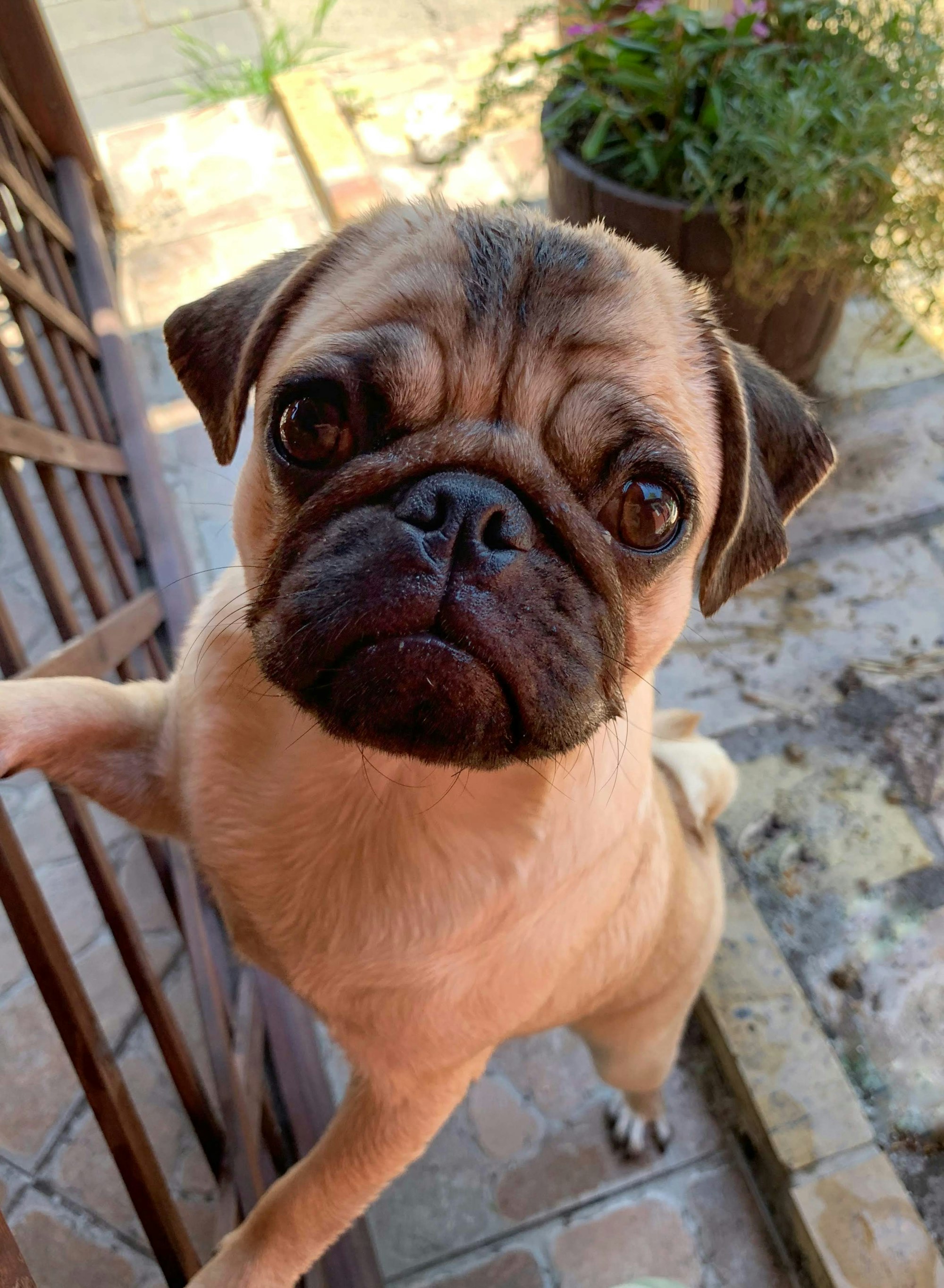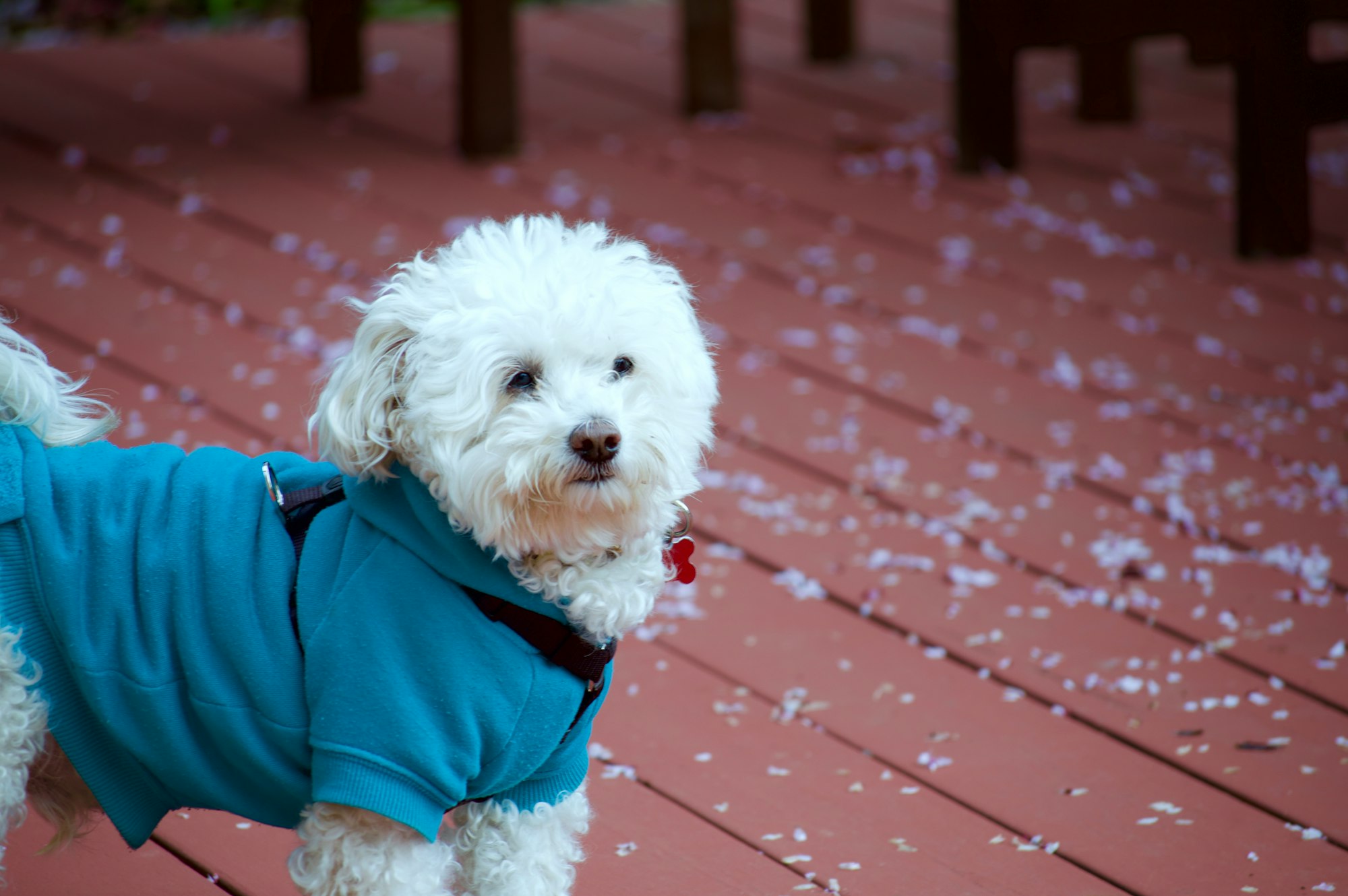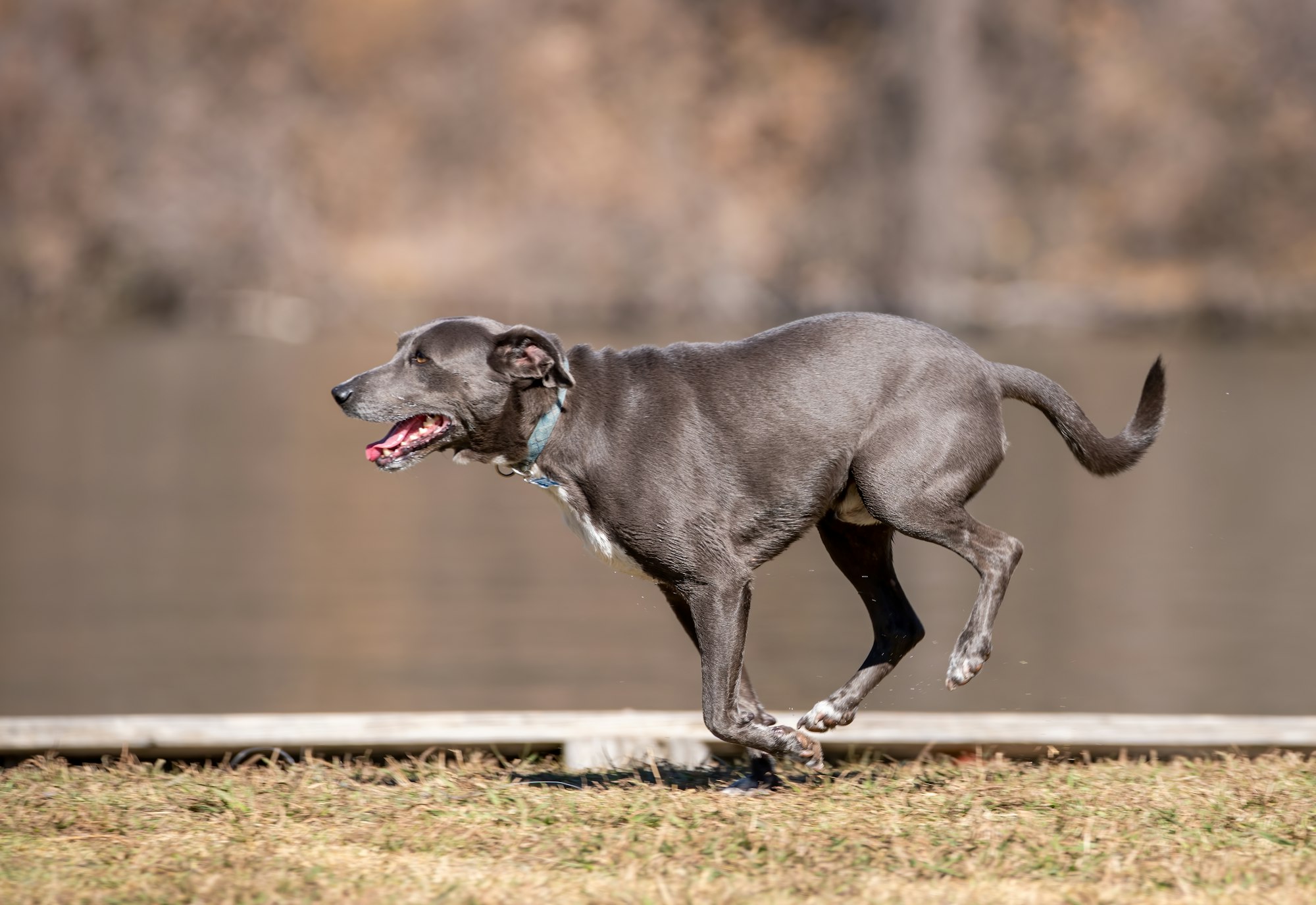Brachycephalic syndrome is a condition that affects certain dog breeds with short muzzles and flat faces. It is characterized by various anatomical abnormalities that can impair normal breathing and cause respiratory distress. In this article, we will explore the causes, symptoms, diagnosis, treatment options, and long-term management of brachycephalic syndrome, aiming to provide a comprehensive understanding of this condition and how it can be effectively managed.
The brachycephalic syndrome refers to a set of respiratory issues commonly found in brachycephalic dog breeds such as Bulldogs, Pugs, and French Bulldogs. These breeds have been selectively bred for their distinctive flat faces and short muzzles, which unfortunately come with inherent respiratory challenges.
Brachycephalic syndrome encompasses several abnormalities in the respiratory system, including stenotic nares, elongated soft palate, hypoplastic trachea, and everted laryngeal saccules. These anatomical variations can restrict airflow, leading to breathing difficulties and other associated symptoms.
Causes and Symptoms of Brachycephalic Syndrome
The primary cause of brachycephalic syndrome is the unique facial structure of brachycephalic breeds. The shortened muzzle and compressed airways contribute to the development of the syndrome. Additionally, genetic factors play a role in the occurrence of these abnormalities.
The symptoms of brachycephalic syndrome may vary in severity but commonly include snoring, noisy breathing, exercise intolerance, coughing, gagging, and difficulty breathing during physical exertion or heat. These signs often worsen with age and can lead to life-threatening situations if left untreated.

Diagnosis and Treatment Options
A veterinarian will perform a thorough examination to diagnose brachycephalic syndrome. This may include assessing the dog's breed, physical characteristics, and medical history, and conducting diagnostic tests such as X-rays, endoscopy, and airway evaluation.
The treatment approach for brachycephalic syndrome depends on the severity of the condition and the specific anatomical abnormalities present. Both surgical and non-surgical options are available to manage the syndrome effectively.
Surgical and Non-Surgical Procedures
Surgical procedures aim to correct the anatomical abnormalities contributing to brachycephalic syndrome. Common surgical interventions include widening of the nostrils, shortening of the soft palate, and removal of everted laryngeal saccules. These procedures help improve the dog's ability to breathe and reduce respiratory distress.
In less severe cases or when surgery is not feasible, non-surgical management can be pursued. This may involve lifestyle modifications, weight management, environmental adjustments, and the use of medications to alleviate symptoms and improve the dog's quality of life.
Breathing Exercises and Techniques
Breathing exercises and techniques can be beneficial for dogs with brachycephalic syndrome. These exercises, guided by a veterinarian or a certified canine rehabilitation specialist, aim to improve respiratory function and strengthen the muscles involved in breathing. Here are a few exercises and techniques that can help:
Controlled Breathing Exercises: Controlled breathing exercises focus on slowing down and regulating the dog's breathing pattern. This can be achieved by gently placing your hand on your dog's chest and counting the breaths as they inhale and exhale. By encouraging slower and deeper breaths, you can help your dog relax and promote more efficient oxygen exchange.
Sniffing Games: Engaging your dog in sniffing games or puzzle toys encourages them to use their nose more actively, promoting better breathing habits. Scatter treats or hide toys in a safe area and encourage your dog to find them using their sense of smell. This activity not only stimulates their mind but also encourages deeper breathing.
Environmental Enrichment: Providing a stimulating environment can help keep your brachycephalic dog mentally engaged and reduce anxiety or stress that may exacerbate respiratory symptoms. Offer puzzle toys, interactive feeders, or scent-based activities that encourage exploration and mental stimulation without excessive physical exertion.
Slow and Steady Exercise: While exercise is essential for a dog's overall health, it's essential to choose activities that are suitable for brachycephalic breeds. Avoid strenuous activities or those that require excessive exertion, especially in hot or humid weather. Opt for gentle walks or low-impact exercises that allow your dog to stay active without putting excessive strain on their respiratory system.
Lifestyle Modifications
Modifying your dog's lifestyle can significantly improve their comfort and manage the symptoms of the brachycephalic syndrome. Here are some lifestyle modifications to consider:
Weight Management: Maintaining a healthy weight is crucial for brachycephalic dogs, as excess weight can further impede breathing. Work with your veterinarian to determine the ideal weight range for your dog's breed and size. Adjust their diet accordingly and ensure they receive regular exercise to help them achieve and maintain a healthy weight.
Temperature and Environmental Control: Brachycephalic dogs are more susceptible to heat exhaustion and breathing difficulties in hot and humid conditions. Ensure your dog has access to a cool and well-ventilated environment, especially during warm weather. Avoid exercising them during the hottest parts of the day and provide them with fresh water at all times.
Elevated Feeding and Sleeping: Raising your dog's food and water bowls, as well as their sleeping area, can help reduce strain on their airways during mealtime and rest. Elevated bowls promote a more natural neck position and can make swallowing easier for dogs with brachycephalic syndrome.
Stress Reduction: Stress and anxiety can exacerbate respiratory symptoms in brachycephalic dogs. Create a calm and peaceful environment for your dog, minimizing exposure to loud noises, excessive excitement, or stressful situations. Provide them with a safe space where they can retreat when they feel overwhelmed.

Precautions and Considerations
When caring for a dog with brachycephalic syndrome, it's essential to keep certain precautions and considerations in mind:
Regular Veterinary Check-ups: Schedule regular check-ups with your veterinarian to monitor your dog's respiratory health and ensure the effectiveness of their treatment procedure. Routine examinations, diagnostic tests, and assessments of their airway function can help detect any changes or complications early on.
Avoiding High-Risk Situations: Brachycephalic dogs are more prone to respiratory distress, so it's important to avoid high-risk situations that could exacerbate their symptoms. This includes exposure to extreme temperatures, excessive physical exertion, and environments with poor air quality or irritants.
Proper Rest and Recovery: Provide your brachycephalic dog with ample opportunities for rest and recovery. Avoid overexertion and allow for regular breaks during physical activities. Ensure they have a quiet and comfortable space to relax, free from excessive noise or stressors.
Supervised Interactions: When socializing or allowing your brachycephalic dog to interact with other dogs or animals, ensure that the interactions are supervised. Some dogs with brachycephalic syndrome may be more susceptible to respiratory distress during play or rough interactions. Monitor their breathing and intervene if necessary.
Long-Term Management
Managing brachycephalic syndrome requires a long-term approach to ensure your dog's well-being. Here are some key aspects of long-term management:
Adherence to Treatment Plan: Follow your veterinarian's prescribed treatment plan diligently. This may include medications, breathing exercises, surgical interventions, and lifestyle modifications. Consistency and compliance are crucial to effectively manage the symptoms of brachycephalic syndrome.
Regular Exercise: While brachycephalic dogs require careful exercise, it's important to provide them with regular, low-impact physical activity. Regular exercise helps maintain a healthy weight, strengthens their muscles, and promotes overall well-being. Consult with your veterinarian to determine appropriate exercise routines for your dog.
Weight Management: Maintaining an optimal weight is essential for managing brachycephalic syndrome. Excess weight can put additional strain on the respiratory system, making breathing more difficult. Work with your veterinarian to establish a balanced diet and monitor your dog's weight regularly.
Environmental Considerations: Create a safe and comfortable environment for your brachycephalic dog. Ensure good ventilation in their living space and provide cool areas during hot weather. Minimize exposure to environmental irritants such as smoke, dust, and strong odors, as they can worsen respiratory symptoms.
Complications and Risks
The Brachycephalic syndrome can lead to various complications and risks if left untreated or unmanaged. It's important to be aware of these potential issues:
Respiratory Distress: The untreated brachycephalic syndrome can result in severe respiratory distress, especially during physical exertion or in stressful situations. This can lead to oxygen deprivation, fainting, or even collapse. Prompt recognition and management of respiratory distress are crucial to prevent life-threatening situations.
Heat Intolerance: Brachycephalic dogs have difficulty regulating their body temperature, making them more susceptible to heat exhaustion and heatstroke. Take precautions during hot weather, provide shade and fresh water, and avoid leaving them in hot environments for prolonged periods.
Dental and Oral Health Issues: The unique anatomy of brachycephalic dogs can make them prone to dental and oral health problems. Crowded teeth, misalignment, tooth decay and increased plaque and tartar buildup are common. Regular dental care, including teeth brushing and professional cleanings, is essential to maintain oral health and prevent complications.
Eye Problems: Brachycephalic breeds often have prominent and protruding eyes, making them more susceptible to eye injuries and infections. Additionally, their facial structure may lead to inadequate tear drainage and an increased risk of dry eye. Regular eye examinations and proper eye care can help prevent and manage these issues.
Brachycephalic Syndrome in Different Breeds
The brachycephalic syndrome can affect various dog breeds, but it is particularly prevalent in certain breeds with brachycephalic characteristics. Here are some breeds commonly associated with brachycephalic syndrome:
Bulldogs: Bulldogs, including English Bulldogs and French Bulldogs, are known for their distinctive flat faces and short muzzles. They are among the most commonly affected breeds by brachycephalic syndrome.
Pugs: Pugs are another breed susceptible to brachycephalic syndrome due to their compact skull shape and shortened airways. Their adorable wrinkled faces and curly tails come with an increased risk of respiratory issues.
Boston Terriers: Boston Terriers have a compact and muscular build with a short, pushed-in muzzle. This breed is prone to brachycephalic syndrome and may require management strategies to improve their breathing.
Shih Tzus: Shih Tzus have a characteristic flat face, which can contribute to the development of brachycephalic syndrome. Careful monitoring and proactive management are essential for their well-being.
Boxers: Boxers may also be affected by brachycephalic syndrome, although their facial structure is not as extreme as some other breeds. Nonetheless, vigilance and appropriate care are important to address any potential respiratory difficulties.
It's crucial to note that brachycephalic syndrome can occur in other brachycephalic breeds or even mixed-breed dogs with brachycephalic traits. If you have a brachycephalic dog, familiarize yourself with the specific risks and considerations associated with their breed to provide them with the best possible care and support.

Conclusion
Brachycephalic syndrome is a condition that affects dogs with brachycephalic characteristics, characterized by respiratory difficulties due to their unique facial structure. While these adorable breeds may have their charm, it's important to be aware of the challenges they face and take proactive measures to ensure their well-being.
By understanding the symptoms and causes of brachycephalic syndrome, you can recognize the signs early and seek appropriate veterinary care. Breathing exercises and techniques, along with lifestyle modifications, play a crucial role in managing the condition. Controlled breathing exercises, sniffing games, and environmental enrichment can help improve respiratory function and reduce stress.
Lifestyle modifications, such as weight management, temperature control, and elevated feeding and sleeping areas, can alleviate strain on the airways and improve overall comfort. Additionally, stress reduction techniques and supervised interactions can help minimize the risk of respiratory distress.
Long-term management involves adhering to the treatment plan prescribed by your veterinarian, regular exercise within safe limits, and maintaining an optimal weight. Creating a conducive environment for your brachycephalic dog and monitoring their oral and eye health is also crucial.
It's necessary to be aware of potential complications and risks associated with brachycephalic syndrome, including respiratory distress, heat intolerance, dental and oral health issues, and eye problems. Regular veterinary check-ups and proactive measures can help prevent and address these complications effectively.
Remember, the brachycephalic syndrome can affect various breeds, including Bulldogs, Pugs, Boston Terriers, Shih Tzus, and Boxers. However, the condition can also occur in other brachycephalic breeds or mixed-breed dogs with similar characteristics.
By being attentive, informed, and proactive, you can provide your brachycephalic dog with the care and support they need to live a happy, healthy life. Your veterinarian is your best resource for guidance and advice tailored to your dog's specific needs.
Ensure a joyful and comfortable life for your beloved brachycephalic companion by prioritizing their respiratory health and overall well-being.
Frequently Asked Questions
1. Can brachycephalic syndrome be cured?
Brachycephalic syndrome is a lifelong condition, but its symptoms can be managed through various interventions, including medical treatment, breathing exercises, lifestyle modifications, and surgery if necessary. The goal is to improve the dog's quality of life and minimize respiratory difficulties.
2. Is brachycephalic syndrome genetic?
The brachycephalic syndrome has a genetic component, as it is more prevalent in certain dog breeds with brachycephalic characteristics. Breeding practices that prioritize the health and well-being of the breed can help reduce the incidence of the syndrome.
3. Can brachycephalic syndrome be prevented?
The brachycephalic syndrome cannot be entirely prevented, as it is primarily linked to breed characteristics. However, responsible breeding practices, early detection of symptoms, and proactive management can help mitigate the impact of the syndrome and improve the dog's overall quality of life.
4. Is brachycephalic syndrome painful for dogs?
The brachycephalic syndrome can cause discomfort and respiratory distress for affected dogs, especially during episodes of breathing difficulties. Timely intervention and appropriate management can help alleviate pain and improve their comfort.
5. Can brachycephalic syndrome be life-threatening?
Severe cases of brachycephalic syndrome can be life-threatening, particularly during episodes of respiratory distress or when complications arise. It's essential to be aware of the signs, seek veterinary care promptly, and follow a comprehensive management plan to minimize the risk of life-threatening situations.
For more helpful articles about pet-parenting tips, check out the Off Leash blog at TryFi.com.
Want to know more about TryFi.com? The Fi Dog Collar is a GPS tracking collar that not only keeps track of your dog’s location, activity levels, and sleep patterns, but it also alerts you if your dog escapes your backyard. This is the fastest way to find your dog after an escape. Try the Fi Dog Collar today!






